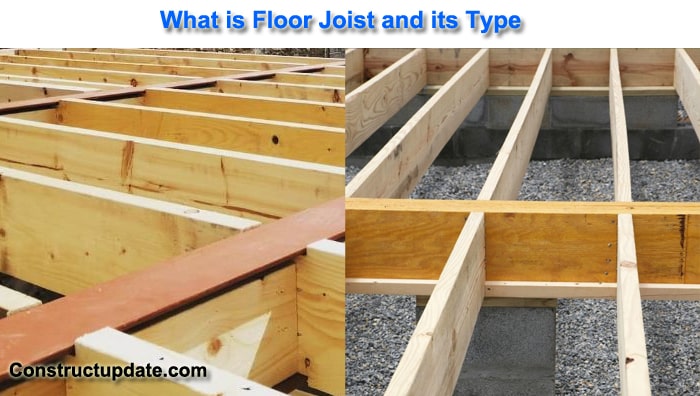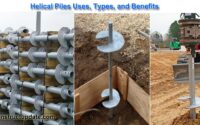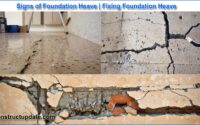What is a Floor Joists | Uses and Types of Floor Joists
What is Floor Joists
In the construction of a home, a floor joist is an important component. Joists are horizontally spanning building components that run between a base, walls, and structural beams. The primary purpose of floor joist installation is to support the weight transfer of a ceiling or floor in construction. In this article, we will try to understand floor joists and its types and uses.
You don’t need to know much about floor joists. It doesn’t hurt to know about the finer points of your home, though. You should be aware of the many materials that make up your flooring system, as well as the utilisation of laminated veneer lumber and old-growth trees.
A floor joist is a horizontal beam that supports and encloses the flooring above a base. It is commonly composed of wood. The loads are transferred to the house’s vertical beams by floor joists.
The majority of floor joists are single or double, and are often built of 2x6s or 2x8s. On occasion, they are formed of 2x10s that have been quadrupled for added support. However, the minimum floor joist size is always 26 inches.
Because many floors are built directly into a concrete slab, floor joist installation isn’t always required for a house. Floor joists are necessary for structural stability in dwellings built over basements or on wood foundations.

Types of Floor Joists
Solid Lumber
Contiguous boards, usually made from old-growth trees, make up solid wooden joists. Species, board size, spacing, and deflection all have an impact on their span distances. On a job site, solid wooden joists are still widespread, but the supply of trees is running out, and using younger trees for joists can result in twisted wood.
I-Beams Joists
I-Beams joists, also known as TJI joists, are named for their resemblance to the capital letter I. Different materials are used to construct different sections of the I. Wood or laminated veneer are frequently used for the tops and bottoms. Plywood or oriented strand board are commonly used for the centre support (OSB).
Open-Web Floor Trusses
To sustain floor loads, open-web floor trusses use cantilevered wood parts. Many contractors prefer these trusses because they eliminate the need to measure and cut openings for pipelines and electrical wires.
Joist Span Considerations
The distance covered by a joist span is the distance between supporting structures. The spans are usually calculated by structural experts to assure correctness.
Generally speaking, the larger the structure, the larger the joists used. Floor joist spans are affected by factors such as the type of floor joist and the dimensional lumber used to create them, as well as building codes.
It’s crucial to understand that joist sizes aren’t uniform. As a result, various considerations must be taken into account when selecting the proper joist size and span.
Wood Species of Floor Joists
Redwood, hemlock, Douglas fir, and southern yellow pine are the most popular woods used to create floor joists. However, not all types of wood products are available in every state.
When picking joist material, it’s critical to understand the differences in strength between different types of wood. The bending strength of wood determines how much weight it can bear perpendicular to the grain. Bending strength is commonly measured in terms of low, medium, or high.
Longer distances can be covered with stronger wood without the need for extra support. Redwood, for example, has a medium bending strength and hence cannot support as much weight as fir. So, while one sort of wood may appear to be more appealing to you, you must evaluate its strength. If you want to change the appearance of an exposed joist, staining is always a choice.
Grade
When choosing wood floor joists, another strong element to consider is the lumber grade. The number of knots and other faults in the wood define the grade. Lumber in higher grades has fewer faults and is stronger than lumber in lower grades. The better the grade, however, the higher the price.
The most common grade of lumber used for floor joists is #2. This lumber has more knots and faults than higher grades, but it retains most of its strength.
Lumber Width
The breadth of timber has a big impact on how far a joist can span, or how far a piece of lumber can go before needing to be supported by a foundation or a support post. The top-to-bottom breadth of a joist board affects its strength. This is far more crucial than the board’s thickness.
Load Capacity
When employing floor joists, load capacity is crucial. Expert knowledge of wood’s structural properties, as well as a comprehension of building code requirements, are required to determine a floor joist’s load capacity.
A floor must support two types of weight: live and dead loads.
Live Loads
The weight of everything that isn’t attached to the structure, such as furniture, appliances, and people, is referred to as the living load. According to the International Residential Code, non-sleeping rooms must support a minimum live load of 40 pounds per square foot and sleeping rooms must support a minimum live load of 30 pounds per square foot.
Dead Loads
Dead load refers to the weight of the floor structure and any structures permanently linked to it. The materials that make up the floor dictate the load. The dead load on a typical wood-frame floor is roughly 8 pounds per square foot. The dead load is increased by heavier flooring materials.
Deflection Limits
The bend or “sag” in a floor generated by loads is known as deflection. The maximum deflection allowed is commonly expressed as a percentage of the span length (L) in inches. According to Section 1604.3 of the 2012 International Building Code (IBC), dead and live loads on floor joists should not exceed L/240.
Joist Sizing Calculations
A simple calculation may be used to determine the depth required for a floor joist: half the span plus two. For example, if you had a 16-foot-long floor in a room, you would divide it in half (eight) and then add two to obtain 10. As a result, the joist depth will need to be 10 inches.





